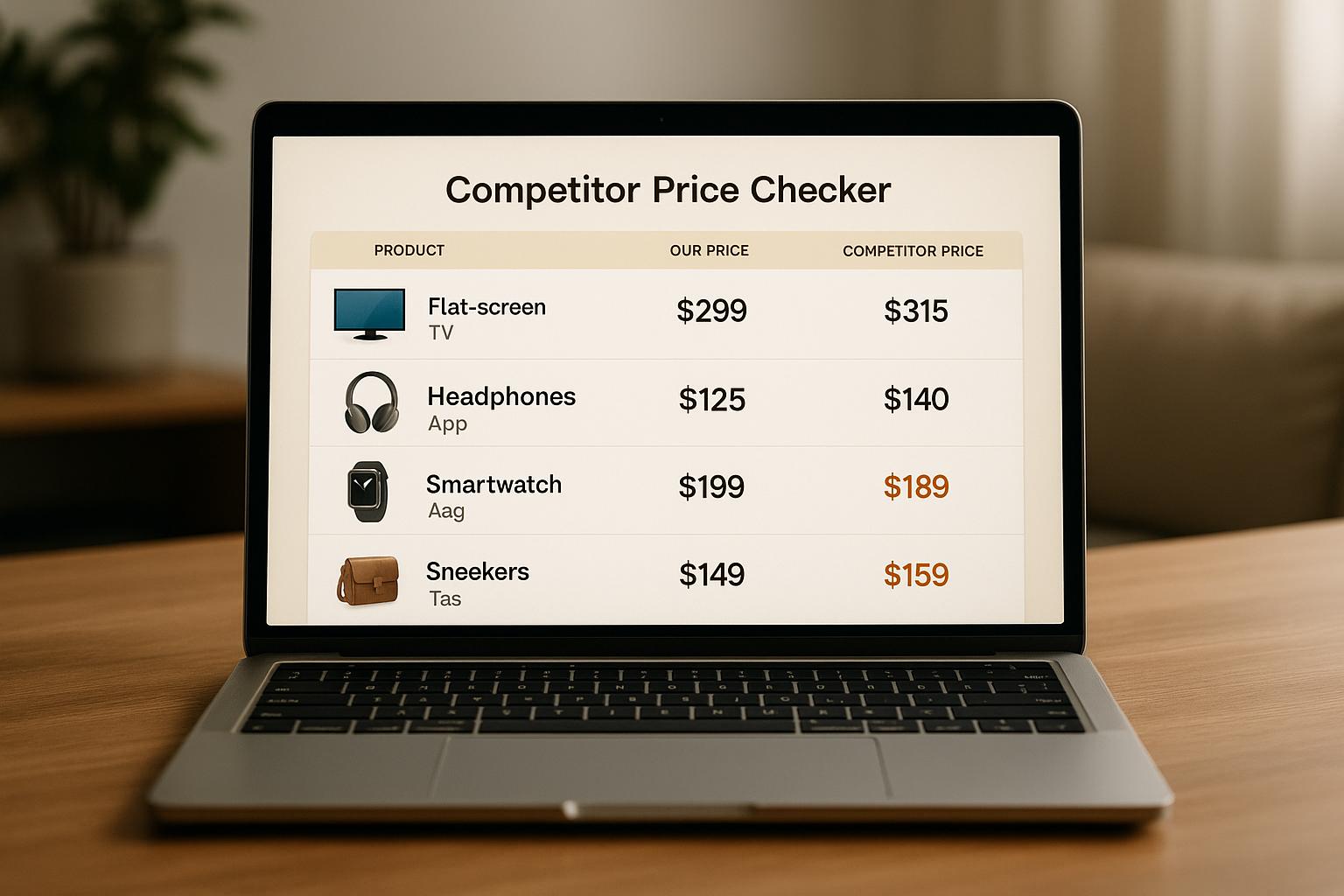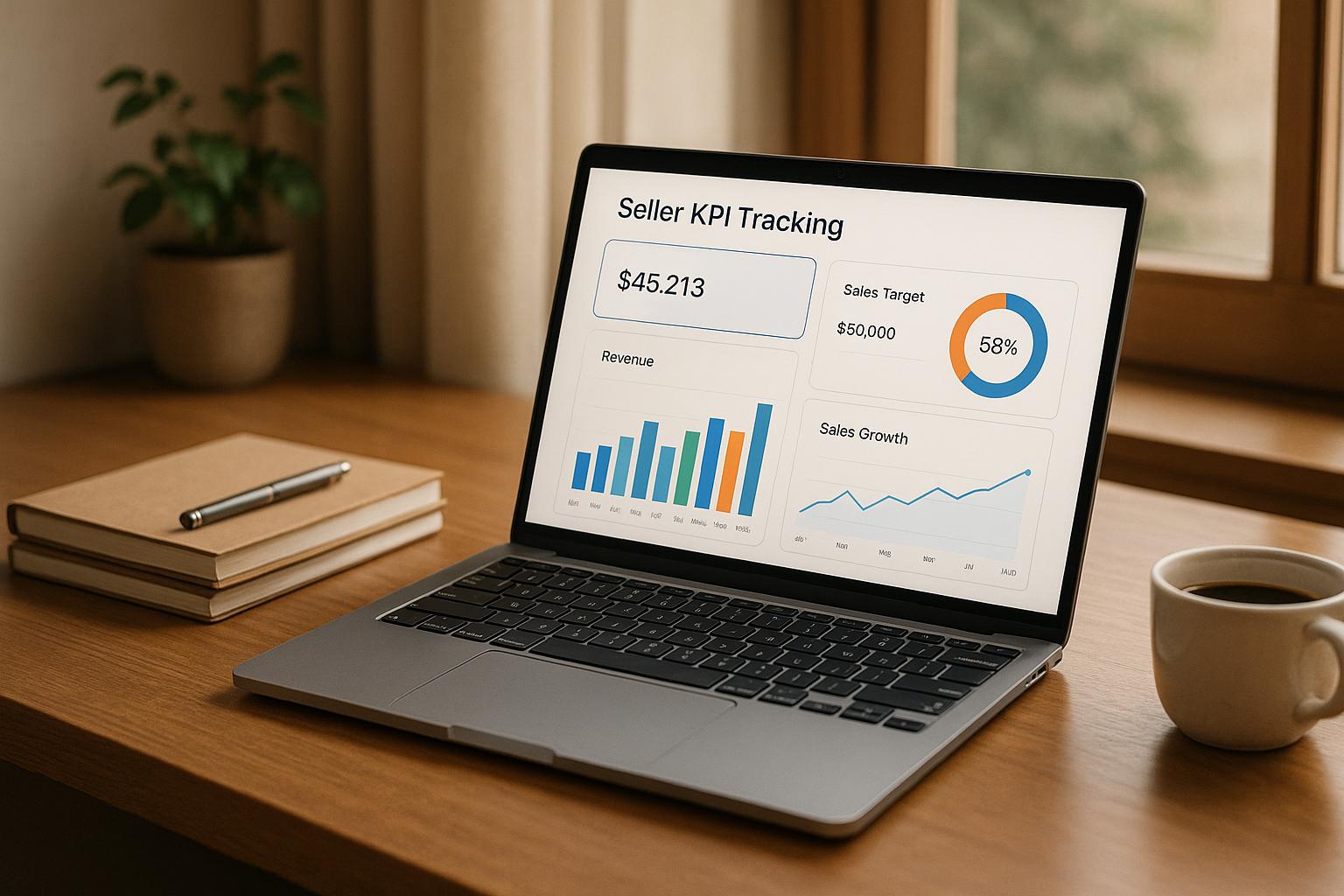Guide to Data Quality Management for E-Commerce Scraping

March 20, 2025
In e-commerce, bad data hurts profits. Accurate, fresh, and complete data ensures smarter decisions about pricing, inventory, and competition. This guide explains how to manage common challenges like missing data, duplicates, or outdated info, and highlights tools like ShoppingScraper for real-time data collection and validation.
Key Takeaways:
- Data Accuracy: Use EAN/GTIN codes, SKUs, and algorithms for precise product matching.
- Data Completeness: Collect full product details to track pricing, inventory, and competitors.
- Data Freshness: Automate updates hourly, daily, or weekly to stay current.
- Validation & Cleaning: Automate checks for errors and standardize formats for reliable insights.
Quick Overview:
| Challenge | Solution |
|---|---|
| Missing Data | Algorithmic matching, cross-referencing |
| Inconsistent Formats | Data cleaning and validation steps |
| Outdated Information | Real-time API updates |
| Duplicate Entries | Automated error handling |
By focusing on these strategies, businesses can maintain high-quality data and make better decisions in a fast-moving market.
Core Data Quality Elements
Data Accuracy Standards
Advanced EAN/GTIN algorithms, combined with title and URL matching, help ensure precise product identification. This layered approach minimizes errors and keeps data consistent during product matching.
"ShoppingScraper supports us in making better decisions for our clients. The data accuracy in combination with the fast way to extract it to our own platforms makes ShoppingScraper a valuable partner." - Koen van den Eeden, OMG Transact Managing Director
The system uses multiple identifiers for accuracy:
| Identifier Type | Purpose | Verification Method |
|---|---|---|
| EAN Codes | Primary product matching | Real-time verification |
| SKUs | Secondary identification | Cross-reference checking |
| ASINs | Marketplace-specific tracking | Automated validation |
| URLs | Direct product linking | Live verification |
Data Completeness Requirements
After accurate product matching, gathering full product details becomes essential. The system collects detailed data, enabling businesses to make informed decisions with a complete view of the market.
"Matching products in ShoppingScraper is really easy. We just had to import our list of products with EAN codes and the system automatically scraped the right product information." - Jos Roodhuizen, Commercial director Badkamerwinkel.nl
The system captures essential product details to:
- Track pricing across different variants
- Monitor inventory levels with precision
- Analyze competitor products effectively
- Maintain detailed product specifications
Data Freshness Management
In the fast-moving e-commerce world, staying updated is non-negotiable. Recent API optimizations have reduced response times to under 4 seconds for most requests, with Google Shopping API performance improving by 25%.
To keep data up-to-date, businesses can leverage:
- Real-time data retrieval through API calls
- Scheduled data collection at intervals (hourly, daily, or weekly)
- Automated systems for continuous monitoring
- Instant updates for price and inventory changes
Missing Data Solutions
Finding Missing Data Sources
When dealing with incomplete e-commerce data, figuring out where the gaps originate is key to gaining accurate insights. One common issue is mismatched product identifiers. ShoppingScraper tackles this with powerful matching algorithms that combine title and URL checks, while also cross-referencing SKUs and ASINs for precise product identification.
Spotting these gaps allows for more accurate methods to fill in the missing pieces, ensuring datasets are complete and useful.
Methods to Fill Missing Data
ShoppingScraper employs two main techniques:
- Algorithmic Matching: Advanced algorithms are used to fill in missing product details intelligently.
- Cross-Reference Validation: Multiple identifiers are cross-checked to address data gaps effectively.
These methods not only complete datasets but also uphold high standards of data quality.
Data Validation Steps
Automatic Data Checks
After addressing missing data, automated checks play a key role in maintaining data accuracy. These systems work in real time to ensure the integrity of e-commerce data. ShoppingScraper uses advanced verification processes to confirm product details across various marketplaces.
Some essential automated checks include:
- Verifying product identifiers like EAN, SKU, and ASIN
- Ensuring price formats are consistent (e.g., correct currency symbols and decimals)
- Confirming proper URL structures
This process builds on earlier methods to ensure accurate and reliable data collection.
Data Cleaning Methods
Data cleaning is all about standardizing information and fixing inconsistencies. Here are some key methods used:
| Cleaning Method | Purpose | How It Works |
|---|---|---|
| Real-time Verification | Immediate accuracy checks | Automated validation during data collection |
| Product Matching | Consistent product identification | Uses EAN/GTIN algorithms combined with title checks |
| Error Handling | Resolving failed requests | Provides detailed error messages and status codes |
If data collection fails, the system provides clear error messages and codes, making troubleshooting straightforward. This ensures failed requests are flagged and not counted as valid, keeping the data accurate and actionable.
Long-term Data Quality
To maintain data accuracy over time, ShoppingScraper uses automated scheduling options (hourly, daily, or weekly) and instant API updates. These features help ensure the data remains reliable and up to date.
sbb-itb-65e392b
Data Quality Tracking
Data Quality Metrics
Monitoring specific metrics is crucial for maintaining top-notch data quality in e-commerce scraping. Here are some key indicators to focus on:
| Metric Type | Description | Target Threshold |
|---|---|---|
| Response Time | Speed of completing API requests | Less than 4 seconds |
| Uptime | System availability | At least 99% |
| Data Completeness | Presence of required fields | Minimum 95% |
ShoppingScraper recently optimized its Google Shopping API, resulting in a 25% boost in performance while still achieving 99% uptime. These metrics are paired with automated alert systems to ensure data remains reliable and consistent.
Quality Alert Systems
Automated alerts are designed to detect and flag quality issues before they impact decision-making. The platform provides clear error messages and status codes, enabling users to troubleshoot data collection issues quickly and efficiently.
Quality Improvement Steps
The platform offers several tools and strategies to refine data collection and ensure accuracy:
- Flexible Scheduling: Adjust data collection intervals (hourly, daily, or weekly) to maintain up-to-date information - especially important for pricing data.
- Error Handling: Follow detailed error resolution guidelines provided in the API documentation to address issues promptly.
- Validation Processes: Use EAN/GTIN matching algorithms, along with title and URL checks, to confirm accurate product identification across different marketplaces. This significantly enhances the reliability of the data collected.
ShoppingScraper Data Quality Tools

ShoppingScraper offers specialized tools to ensure reliable data collection, seamless exports, and precise filtering, helping maintain top-tier data accuracy.
Live Data Collection
ShoppingScraper's system delivers product data in real time, using advanced matching algorithms to ensure precise results. With response times under 4 seconds, the API provides up-to-date pricing information, essential for tracking fast-changing markets.
The platform supports multiple product identifiers to cover various tracking needs:
| Identifier Type | Purpose | Verification Method |
|---|---|---|
| EAN Codes | Identifying product variants | Automated matching |
| SKUs | Seller-specific tracking | Cross-referencing |
| ASINs | Amazon-specific products | Platform verification |
| URLs | Direct product links | Real-time validation |
Scheduled Data Exports
The Scheduler endpoint automates data exports, offering flexible intervals to meet different market analysis needs. Users can tailor the frequency of exports:
- Hourly updates for monitoring rapidly changing prices
- Daily collections for keeping tabs on inventory
- Weekly exports for identifying trends over time
Integration options include RESTful API, web interface, and Google Sheets, with support for JSON and CSV formats to fit smoothly into existing workflows.
Data Filtering Tools
ShoppingScraper’s filtering tools ensure data accuracy by verifying and refining information from multiple marketplaces, including Google Shopping (available in over 40 countries), Amazon, bol.com, and Coolblue. These filters work alongside live collection and scheduled exports for a multi-layered quality check.
"Matching products in ShoppingScraper is really easy. We just had to import our list of products with EAN codes and the system automatically scraped the right product information." - Jos Roodhuizen, Commercial director Badkamerwinkel.nl
With its optimized Google Shopping API, ShoppingScraper delivers 99% uptime and improved performance, ensuring dependable access to data across all supported platforms.
Summary and Next Steps
Main Points Review
E-commerce scraping requires effective tools and structured strategies. Companies that use advanced EAN/GTIN matching algorithms alongside title and URL verification achieve higher precision in identifying products. Combining real-time data collection with scheduled exports ensures consistent quality.
Here are some key factors for managing data quality effectively:
| Component | Impact | Best Practice |
|---|---|---|
| Integration Method | Setup Time | Opt for immediate web app access or a 1–2 day API integration based on needs. |
| Data Collection | Accuracy | Track at the EAN level to capture all variants, colors, and sizes. |
| Monitoring | Consistency | Automate data collection at regular intervals (hourly, daily, or weekly). |
| Validation | Reliability | Use multi-layer verification with advanced matching algorithms (title and URL checks). |
These practices form the foundation for improving data quality management over time.
Data Quality Updates
E-commerce data quality management continues to evolve alongside new technologies. ShoppingScraper's platform showcases this progress with features designed to tackle challenges in data accuracy and completeness.
To stay ahead, organizations should focus on:
- Automating data collection schedules.
- Leveraging advanced matching algorithms.
- Regularly validating data for accuracy.
Looking ahead, advancements in automation and matching algorithms will further streamline processes. With support for over 40 countries on Google Shopping, businesses can expect expanded market reach and more thorough data collection.
Related Blog Posts
























































